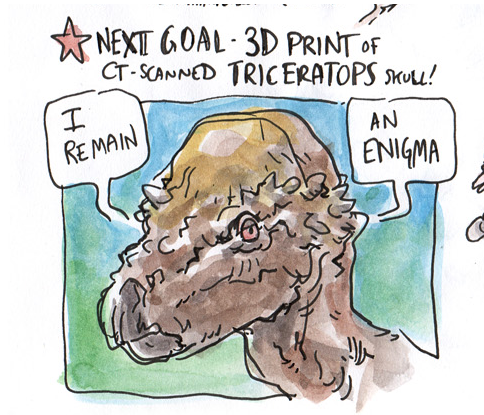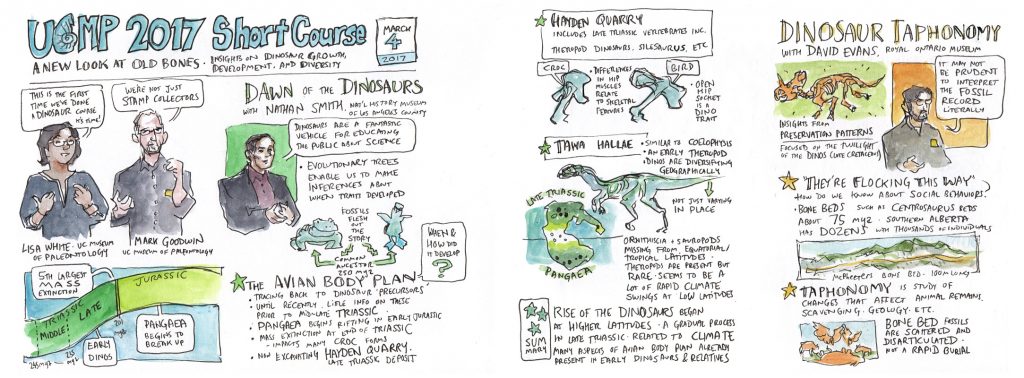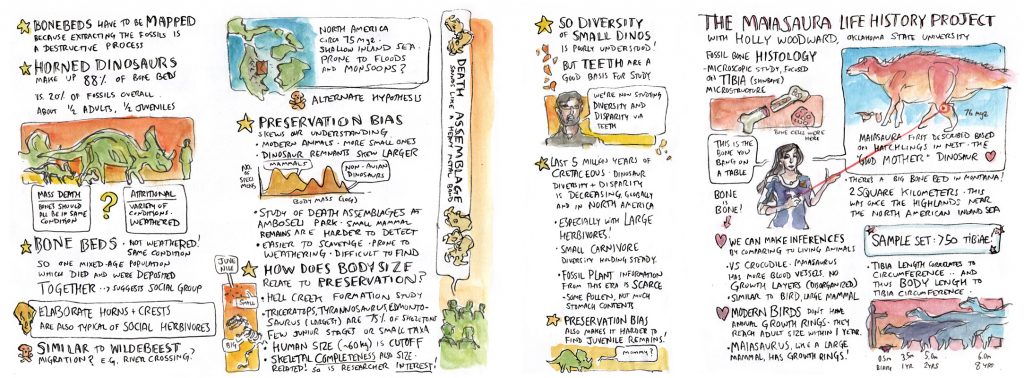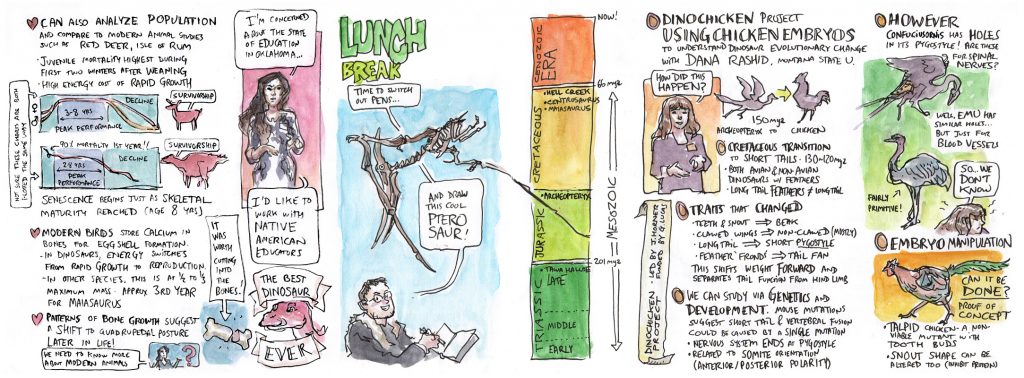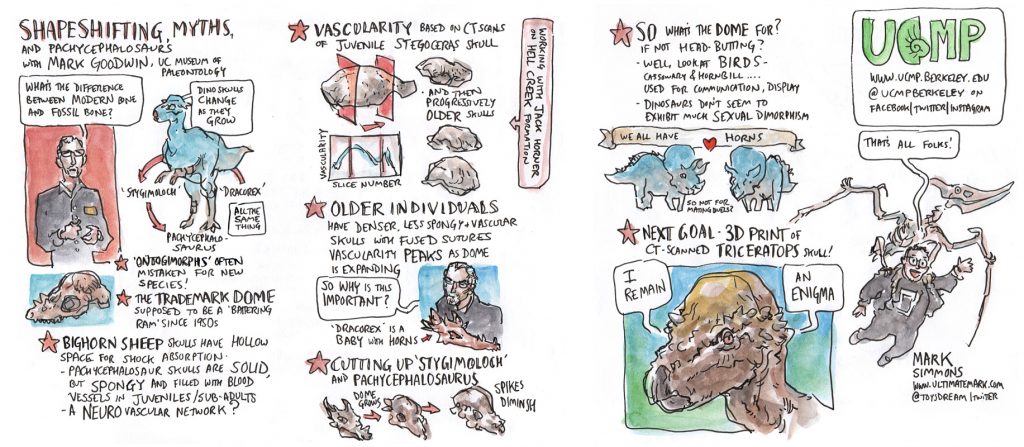On March 4th the popular UCMP annual short course featured dinosaurs this year: “A new look at old bones: Insights into dinosaur growth, development and diversity.” The short course is an ideal way to connect public audiences, particularly teachers and science educators, with current research in paleontology and Earth history. Past short courses have had regional environmental themes (SF Bay ecosystems) or focused on patterns of evolution and extinction.
After Lisa White kicked off the course with a welcome to the more than 150 attendees, UCMP’s very own Mark Goodwin took the stage to introduce the topic and the speakers who were invited from major institutions across the country and Canada.
Nathan Smith from the Natural History Museum of Los Angeles County began with a focus on dinosaurs in the Late Triassic and discussed multiple drivers that may have driven dinosaur diversity, including climatic changes in the early Mesozoic.
David Evans from the Royal Ontario Museum in Toronto, Canada presented his current research on late Cretaceous dinosaurs bonebeds in Alberta, Canada, and the existence of preservational biases and taphonomic factors that affect estimates of dinosaur diversity.
Holly Woodward from Oklahoma State University highlighted paleohistological techniques to infer growth rates of Maiasaura, the “Good Mother” dinosaurs named by Jack Horner, Maiasaura was the first dinosaur to show evidence of parental care of the nestings.
Dana Rashid, a developmental biologist from Montana State University uses genetics and embryological studies to further explore the connection between birds and dinosaurs.
Finally Mark Goodwin concluded the short course with new research on pachycephalosaurs and how they grew their unique cranial “dome” structure on top of their skulls. Mark revealed that the dome preserves an internal network of high vascular tissue, while the exterior displays horns, bumps and knobs that functioned in visual communication, signal changing sociobiological status, and allowed juveniles to recognize juveniles and adults to recognize other adults.
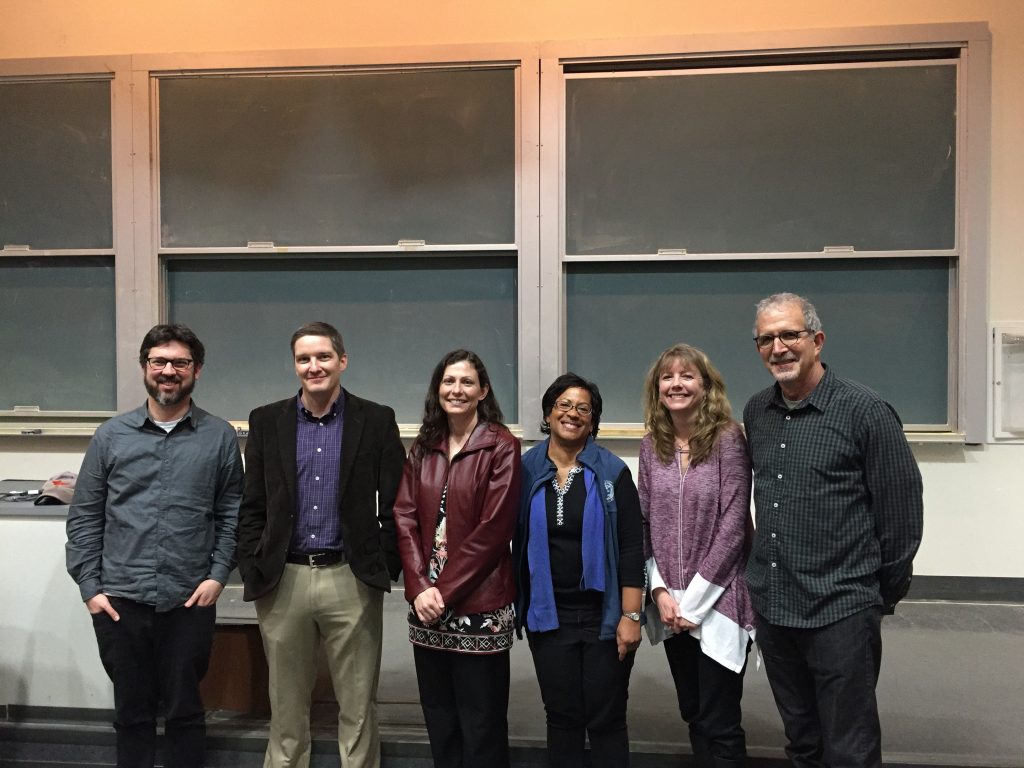
All the while a talented artist was also in the audience. Illustrator Mark Simmons sketched a colorfully illustrated storyboard, containing his notes from each short course presenter. Note the incredible attention to detail, not only to the topics at hand, but the likenesses of the speakers as well. Mark’s website is www.ultimatemark.com and his twitter handle @toysdream. Thanks Mark!
